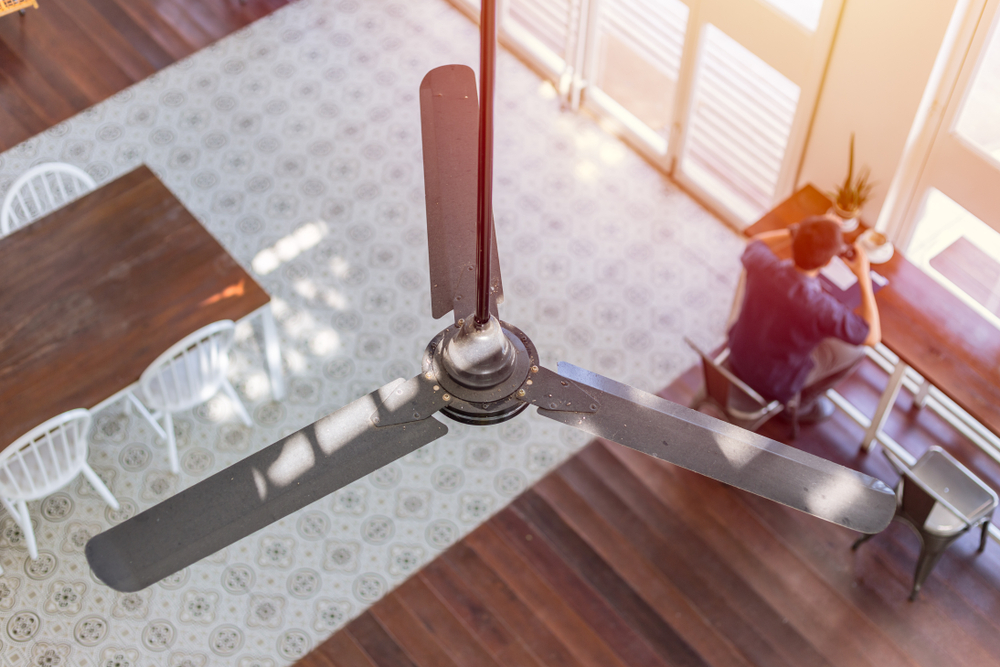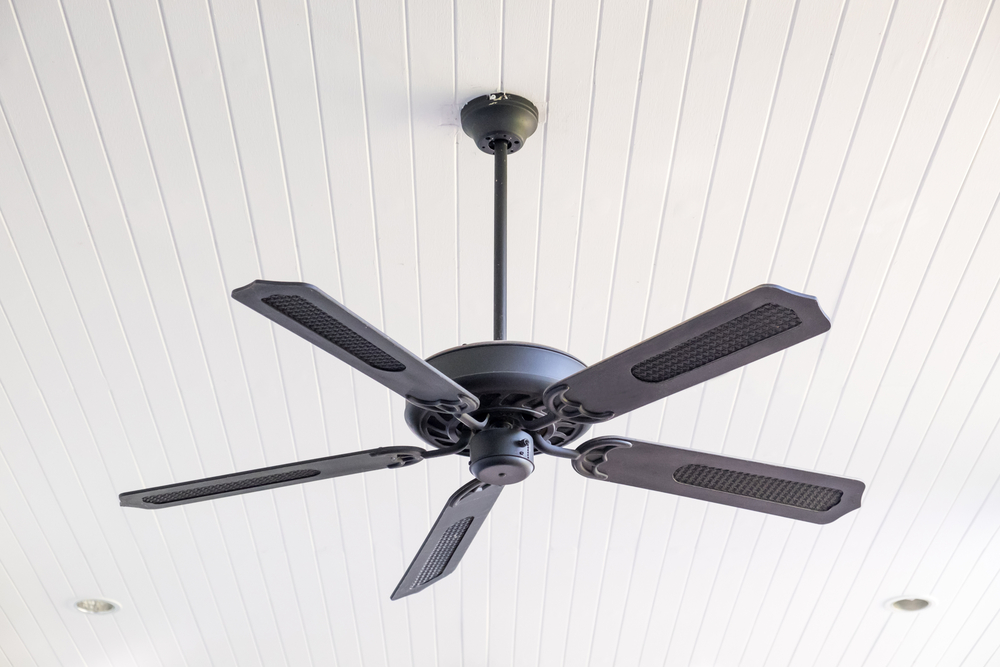If you’ve ever shopped for ceiling fans, more than likely you’ve run across a new few terms and acronyms. Don’t fall into the trap of ignoring the specs and shopping for looks alone – CFM is an important term to understand before you decide on your next ceiling fan.
What is CFM?
CFM stands for Cubic Feet per Minute, which is a measurement that tells you how many cubic feed or air pass by a point in one minute. For ceiling fans, the CFM will tell you how much air a fan can move, or how “windy” it will feel at its highest speed. You’ll also see CFM referred to as “Max Airflow”.
There are a few things that can impact a fan’s CFM, including the motor and the number, pitch (or angle), and length of the fan’s blades. The most important thing to remember is that the higher the CFM, the more air the fan will move.
How much CFM do I need?
Generally speaking, a ceiling fan with a CFM over 4,000 should be enough for your needs, but a CFM over 6,000 is better. Some brands call fans with a CFM over 7,000 high airflow and over 9,000 CFM extreme airflow.
This gets more complicated when you take into account the size of the room and the height of the ceiling. A small bedroom with 8 foot ceilings will be fine with a fan with lower CFM, and a large great room with vaulted ceilings will need to have a fan with much higher CFM in order to move enough air to feel it throughout the space.
Because fan and motor designs vary by the fan and the brand, the best way to know for sure if you’re getting a ceiling fan that will work well for your room is to check the manufacturer’s recommendations for room size.
CFM and Energy Efficiency
CFM is a useful measurement on its own, but it’s also a the key ingredient for figuring out how efficient your ceiling fan is. If you don’t pay attention to efficiency, you could accidentally end up with a fan that uses a lot of energy, costing you more money to use than you realised until it’s too late. An energy efficient fan will move more air using less energy, meaning you can keep your room cool without an unexpected spike in your power bill.
To determine the efficiency of a fan you have to do a little bit of math. Airflow efficiency is CFM divided by the watts (or energy) used to power the fan at its highest speed. For example, a ceiling fan with 4,000 CFM that uses 80 watts will have an airflow efficiency score of 50 (4,000 / 80 = 50).
Generally speaking, a ceiling fan with an airflow efficiency of 75 is considered efficient, but this can vary depending on the size of the fan. One of the easiest ways for consumers to tell if a fan will be energy efficient is to look for the Energy Star logo on the packaging. Any ceiling fan with an Energy Star endorsement will be much more efficient than conventional fans, which will save you money in the long run.
To see a breakdown of how Energy Star uses fan size and CFM to determine whether or not a fan is eligible for an Energy Star rating, check out these graphs. If energy efficiency is a goal for your ceiling fan search, you can also browse ceiling fans on our website, and filter by Energy Star to see only fans with an Energy Star certification.

In short, CFM is a measurement that tells you how much air a fan moves at its highest speed. How much CFM you need from a fan depends a lot on the room its in – the overall size, the usage, the ceiling height, etc. While CFM isn’t the only statistic on the box that matters when shopping for a fan, it’s definitely an important number to consider – especially how it relates to energy efficiency and the amount of money you’ll spend using your fan over the years. Need help finding a ceiling fan? Our lighting experts can help you find exactly what you need at Harbour Lighting.

